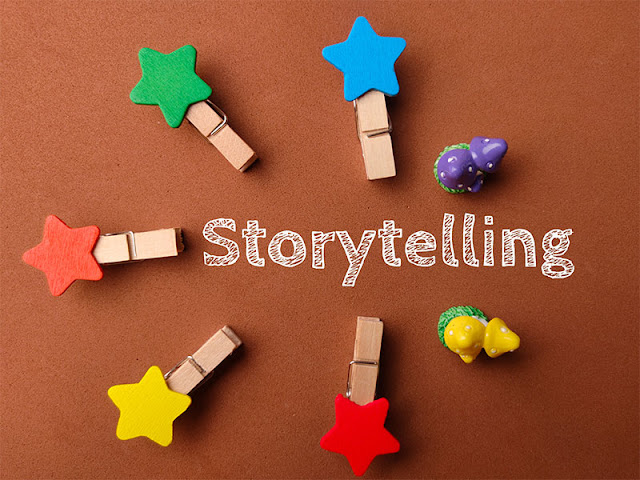Once upon a time, stories were a way to pass on knowledge, history, and morals from one generation to the next. They were told around campfires, in classrooms, and at family gatherings. And even in today's modern world, the art of storytelling still holds an important place in our lives. Whether you're a professional writer, a public speaker, or just a casual conversationalist, the ability to tell a good story can make all the difference. In this article, we'll explore some tips for effective storytelling that will help you captivate your audience, hold their attention, and leave a lasting impression. So sit back, relax, and let's dive into the magical world of storytelling!
Tips for Effective Storytelling
1. Have a clear message
The first and most important tip for effective storytelling is to have a clear message. Your story should have a point or a lesson that you want to convey to your audience. This message should be clear from the beginning of the story, and the rest of the story should be structured in a way that reinforces this message. Without a clear message, your story may be entertaining, but it will not have a lasting impact on your audience.
2. Know your audience
As a master storyteller, you hold the key to unlocking the hearts and minds of your listeners. Knowing your audience is like having a secret treasure map that guides you to the right tone and style for your story. Imagine you're a chef crafting a delicious meal for a discerning group of diners - you wouldn't serve them spicy, exotic cuisine if they're craving a classic, home-style dish. Similarly, if you're telling a story to children, you want to capture their attention with colorful characters, whimsical settings, and a touch of magic.
Visit: how to be a positive influence
3. Use descriptive language
Even the best personality grooming coach will tell you that crafting a captivating narrative requires more than just words on a page - it demands the art of storytelling. The key to unlocking the imagination of your audience lies in your ability to paint a vivid and immersive picture with your words. Harnessing the power of descriptive language is crucial in transporting your listeners to another world. Infuse your tale with sensory details and lively descriptors to bring your story to life. With every turn of phrase, your audience will feel as though they are living and breathing alongside your characters, keeping them enraptured and invested until the very end.
4. Build suspense
A masterful storyteller knows that building suspense is like weaving a spell that captivates the audience's imagination. It's like holding their breath, waiting for the next revelation to come. By cleverly withholding or gradually unraveling key pieces of information, you can create a tantalizing atmosphere of mystery and intrigue that keeps your audience on the edge of their seats. The art of suspenseful storytelling lies in generating a sense of delicious anticipation that makes your audience crave more, drawing them ever deeper into your tale.
Visit: how to create nfts
5. Use humor
Laughter truly is the best medicine, not just for your health, but also for your storytelling skills. Injecting humor into your tale can create a powerful connection with your audience, instantly breaking down barriers and allowing them to feel at ease. A clever quip or a witty anecdote can set the tone and help your message resonate, but be cautious not to go overboard. Like a chef adding spices to a dish, a pinch of humor can be just the right amount, but too much can spoil the flavor and detract from the true essence of your story.
6. Use dialogue
Imagine your story as a stage play where each character is a unique actor with a distinct voice and personality. Instead of telling the audience what happened, let the characters step forward and deliver their lines with gusto. And to guide them, use dialogue tags like a director's cue, indicating who's speaking and how they're saying it. This way, the audience can fully immerse themselves in your story and feel like they're part of the action, eagerly waiting for what's to come next.
Visit: aspects of personality development
7. Create a hook
Immerse your audience into a world of wonder and mystery with a captivating hook that leaves them begging for more. Like a master magician, the opening of your story should be an irresistible illusion that pulls them in and keeps them spellbound until the very end. Will you reveal a shocking secret? Introduce a character in peril? Or perhaps pose a tantalizing riddle? The possibilities are endless, but the key is to craft a hook that grabs your audience's attention and doesn't let go until the final curtain call.
8. Use pacing
Your story is the symphony, you must vary the tempo to keep your audience captivated. Begin with a slow, melodic introduction that entices your audience's senses, and then build up the rhythm with crescendos of excitement and suspense. Each beat must be timed to ensure that your audience remains on the edge of their seats, eagerly awaiting the next movement. With expert pacing, your story will be an unforgettable masterpiece that leaves your audience begging for an encore.
9. Craft a Memorable Finale to Your Story
The final moments of your story can make or break the entire experience for your audience. It's crucial to leave a lasting impression that reinforces the message you want to convey. You can learn this in personality development classes. From unexpected twists to poignant quotes and powerful imagery, there are countless ways to craft a memorable ending that resonates with your listeners.
10. Sharpen Your Storytelling Sword
Embrace Every Opportunity to Practice Your Craft! Whether you're swapping tales with friends, family, or strangers, storytelling is a skill that requires honing. Keep your audience engaged by paying attention to their reactions and feedback, and use every opportunity to improve your storytelling prowess. Remember, like any skill, the more you practice, the better you become.
Visit: tips to control temperament
In today's fast-paced world, effective storytelling is more important than ever. Whether you are a writer, speaker, or simply sharing stories with friends, the ability to captivate an audience and leave a lasting impression is a valuable skill. By following these tips for effective storytelling, you can craft stories that are not only entertaining but also thought-provoking and impactful. So the next time you have a story to tell, remember to have a clear message, know your audience, use descriptive language, build suspense, use humor, incorporate dialogue, create a hook, use pacing, have a memorable ending, and most importantly, practice, practice, practice. With these tools at your disposal, you can become a master storyteller and make a lasting impact on your audience.


Comments
Post a Comment